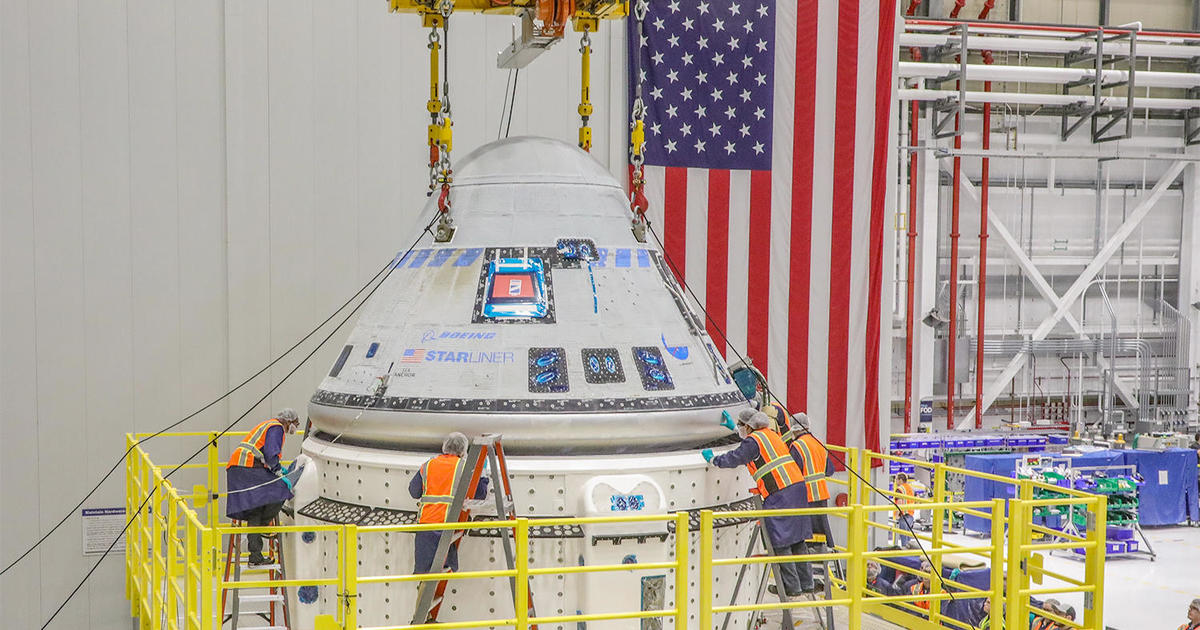Boeing's First Manned Starliner Flight Delayed Until March Or Later
Boeing's first manned Starliner flight delayed until March or later as it will not be transporting passengers this year as initially anticipated. Initially, Boeing had set its sights on July 21 for the inaugural crewed launch of the Starliner capsule.
Author:Camilo WoodReviewer:Dexter CookeAug 09, 20231.9K Shares244K Views

Boeing's first manned Starliner flight delayed until March or lateras it will not be transporting passengers this year as initially anticipated. Initially, Boeing had set its sights on July 21 for the inaugural crewed launch of the Starliner capsule. This pivotal mission, known as Crew Flight Test (CFT), was slated to ferry NASA astronauts Butch Wilmore and Suni Williams on a preliminary journey to and from the International Space Station (ISS).
Boeing's First Manned Starliner Flight Delayed
Regrettably, in early June, Boeing and NASA jointly revealed that the liftoff for CFT had been postponed indefinitely. This delay was attributed to the discovery of unforeseen complications with the Starliner's parachute system and its wiring. Although Boeing had expressed optimism about resolving these issues in time for a possible autumn launch, recent statements from both Boeing and NASA officials (dated August 7) confirm that this timeline will not be met.
"Based on the current plans, we're anticipating that we're going to be ready with the spacecraft in early March," Mark Nappi, Boeing's Starliner vice president and program manager, said during a press conference today.
This is solely an estimated date for when the spacecraft is expected to be ready, he emphasized, highlighting that an actual target launch date hasn't been established yet.
In September 2014, NASA made the decision to engage Boeing and SpaceX in the task of transporting agency astronauts to and from the ISS, granting both companies substantial contracts worth billions of dollars. While SpaceX has smoothly progressed in this endeavor - with its seventh crewed operational flight scheduled for August 25 - Starliner, on the other hand, has only completed two unmanned test missions so far.
The initial one, called Orbital Flight Test (OFT), encountered several issues shortly after its launch in December 2019 and fell short of its intended rendezvous with the ISS. The subsequent mission, designated OFT-2 in May 2022, fared better, successfully docking with the orbiting laboratory and making a safe return to Earth.
Starliner's upcoming significant milestone, Crew Flight Test (CFT), has faced a series of successive delays. Originally slated for December 2022, the launch was first rescheduled to February 2023, followed by subsequent shifts to March, April, and eventually July.

The most recent postponement is a result of two potential safety concerns: Boeing's engineers identified that the "soft links," employed on the suspension lines of Starliner's primary parachutes, possess lower resilience than initially presumed. Additionally, the company discovered that the protective tape utilized to secure the capsule's numerous wires is susceptible to ignition.
In response, Boeing has initiated measures to address these issues. For instance, the company is removing the tape from sections where the process is straightforward and safe. Meanwhile, in more complex areas, they are exploring alternative strategies such as employing protective barriers or coatings to mitigate the risks associated with the tape's flammability, as explained by Nappi.
The parachute-related efforts are also multi-pronged. As an example, Boeing has enhanced the design of the soft links to bolster their strength. Currently, production is underway for the updated version of these soft links, as informed by Nappi.
Furthermore, Boeing has opted to replace Starliner's entire parachute system for CFT with a fresh iteration that was initially intended for the spacecraft's inaugural operational mission. The improved soft links will be integrated into the new parachutes, which will soon undergo a drop test to showcase their capabilities.
"We expect that the drop test will occur in mid to late November," Nappi said. "That's what the planning indicates at this point, and we'll watch that closely."
According to Nappi, Boeing is making steady progress and is expected to complete the necessary tasks by the beginning of March. However, there are additional prerequisites that must be met before both Starliner and astronauts Wilmore and Williams can embark on their journey aboard a United Launch Alliance (ULA) Atlas V rocket.
“„We're now working with NASA's Commercial Crew Program, ISS and ULA on potential launch dates based on our readiness. It's a complicated manifest on ISS, as you all know, and the launch pad of ULA. So, we'll work that throughout the next several weeks and see where we can get fit in, and then we'll set a launch date.- Mark Nappi, Vice President and Program Manager
Conclusion
Notwithstanding the setbacks, Boeing's dedication to the Starliner project and its commitment to meeting contractual commitments with NASA, which encompass a minimum of seven crewed trips to the ISS, including CFT, remain unwavering, as emphasized by Nappi.

Camilo Wood
Author
Camilo Wood has over two decades of experience as a writer and journalist, specializing in finance and economics. With a degree in Economics and a background in financial research and analysis, Camilo brings a wealth of knowledge and expertise to his writing.
Throughout his career, Camilo has contributed to numerous publications, covering a wide range of topics such as global economic trends, investment strategies, and market analysis. His articles are recognized for their insightful analysis and clear explanations, making complex financial concepts accessible to readers.
Camilo's experience includes working in roles related to financial reporting, analysis, and commentary, allowing him to provide readers with accurate and trustworthy information. His dedication to journalistic integrity and commitment to delivering high-quality content make him a trusted voice in the fields of finance and journalism.

Dexter Cooke
Reviewer
Dexter Cooke is an economist, marketing strategist, and orthopedic surgeon with over 20 years of experience crafting compelling narratives that resonate worldwide.
He holds a Journalism degree from Columbia University, an Economics background from Yale University, and a medical degree with a postdoctoral fellowship in orthopedic medicine from the Medical University of South Carolina.
Dexter’s insights into media, economics, and marketing shine through his prolific contributions to respected publications and advisory roles for influential organizations.
As an orthopedic surgeon specializing in minimally invasive knee replacement surgery and laparoscopic procedures, Dexter prioritizes patient care above all.
Outside his professional pursuits, Dexter enjoys collecting vintage watches, studying ancient civilizations, learning about astronomy, and participating in charity runs.
Latest Articles
Popular Articles